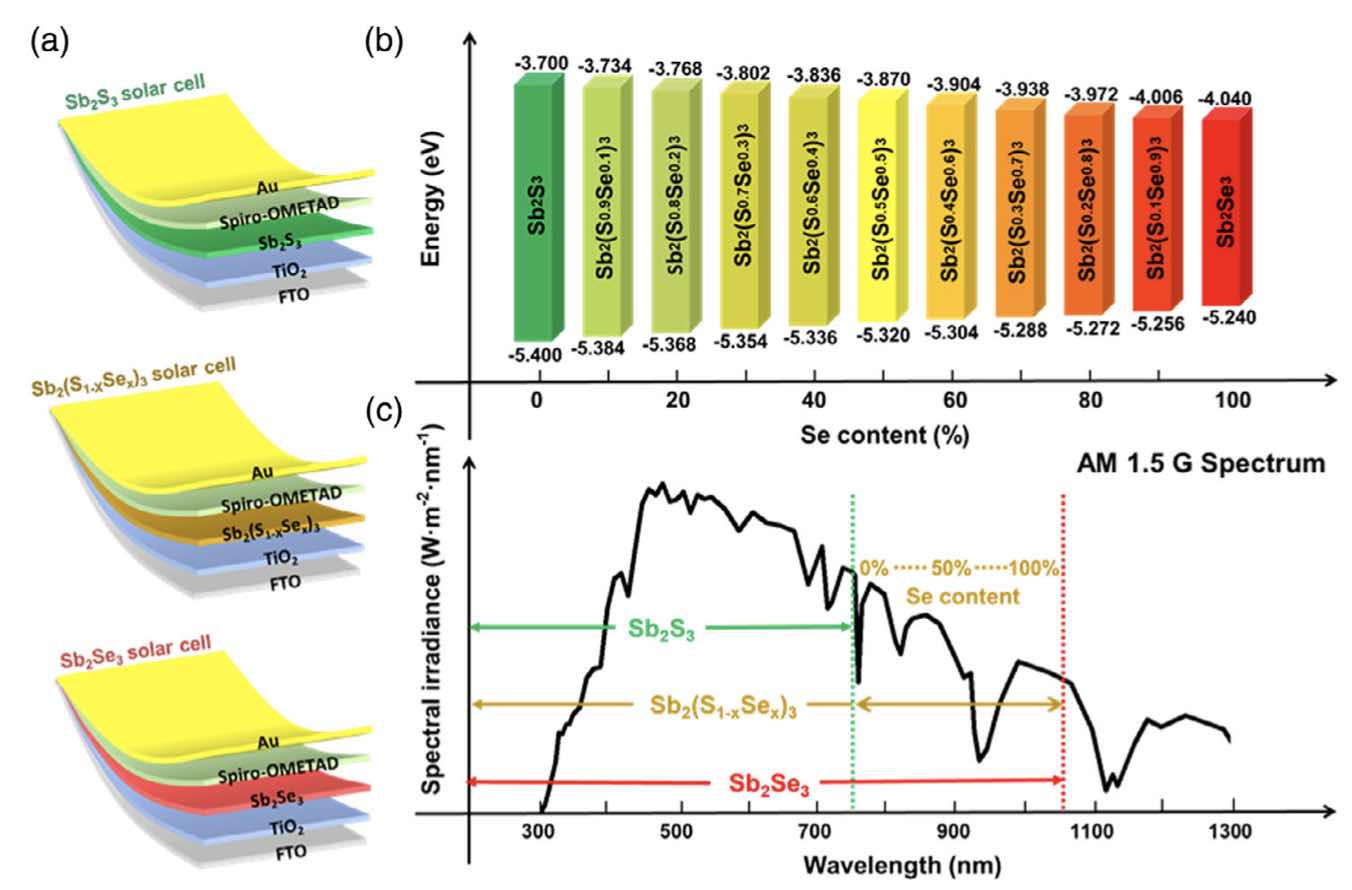Antimony chalcogenides have become a family of promising photoelectric materials for high-efficiency solar cells. To date, single-junction solar cells based on individual antimony selenide or sulfide are dominant and show limited photoelectric conversion efficiency. Therefore, great gaps remain for the multiple junction solar cells. Herein, triple-junction antimony chalcogenides-based solar cells are designed and optimized with a theoretical efficiency of 32.98% through band engineering strategies with Sb2S3/Sb2(S0.7Se0.3)3/Sb2Se3 stacking. The optimum Se content of the mid-cell should be maintained low, i.e., 30% for achieving a low defect density in an absorber layer. Therefore, Sb2(S0.7Se0.3)3-based mid solar cells have contributed to elevate the external quantum efficiency in triple-junction devices by the full utilization of the solar spectrum. In a single-junction solar cell, the bandgap gradient is regulated through the Se content gradient along the depth profile of Sb2(S1−xSex)3. Besides, an increasing Se content profile provides an additional built-in electric field for boosting hole charge carrier collection. Thus, the high charge carrier generation rate leads to a 17.96% improvement in the conversion efficiency compared with a conventional cell. This work may pave the way to boost the conversion efficiency of antimony chalcogenides-based solar cells to their theoretical limits.

Antimony chalcogenides have become a family of promising photoelectric materials for high-efficiency solar cells. To date, single-junction solar cells based on individual antimony selenide or sulfide are dominant and show limited photoelectric conversion efficiency. Therefore, great gaps remain for the multiple junction solar cells. Herein, triple-junction antimony chalcogenides-based solar cells are designed and optimized with a theoretical efficiency of 32.98% through band engineering strategies with Sb2S3/Sb2(S0.7Se0.3)3/Sb2Se3 stacking. The optimum Se content of the mid-cell should be maintained low, i.e., 30% for achieving a low defect density in an absorber layer. Therefore, Sb2(S0.7Se0.3)3-based mid solar cells have contributed to elevate the external quantum efficiency in triple-junction devices by the full utilization of the solar spectrum. In a single-junction solar cell, the bandgap gradient is regulated through the Se content gradient along the depth profile of Sb2(S1−xSex)3. Besides, an increasing Se content profile provides an additional built-in electric field for boosting hole charge carrier collection. Thus, the high charge carrier generation rate leads to a 17.96% improvement in the conversion efficiency compared with a conventional cell. This work may pave the way to boost the conversion efficiency of antimony chalcogenides-based solar cells to their theoretical limits.
